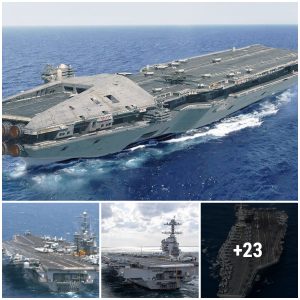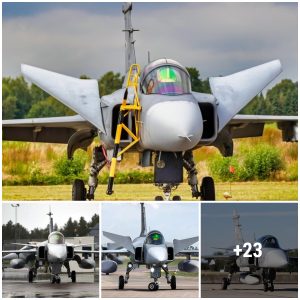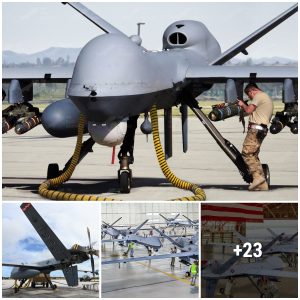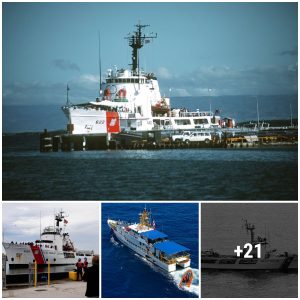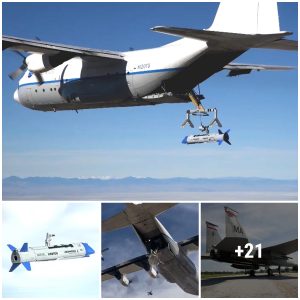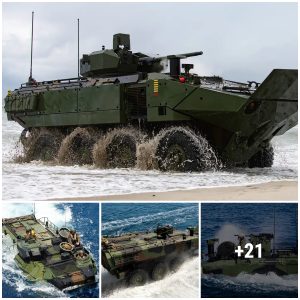Russia is finishing a large-scale expansion of its fleet of combat helicopters, planning a further focus on selective supplies, according to recent statements of some senior officials of the Russian Defense Ministry and leading local experts in the field of combat aviation.
As part of these plans, General Yuri Borisov, a former Russian Deputy Defense Minister who was recently appointed a deputy prime minister of Russia, responsible for the development of military and industrial complex, announced the intention of the Russian Air Forces to purchase more than 100 Ka-52 helicopters this year.
Ka-52s, in combination with Mi-28Ns, are planned to be the main combat force of the Russian Air Force for the next several years.

As for Ka-52, according to recent statements of a spokesman of the Russian Defense Ministry, the Russian Air Force put big hopes on this reconnaissance-strike helicopter, which represents the further development of the iconic Ka-50 Black Shark model used by Russia and the USSR during several military campaigns in the past, including the Soviet–Afghan War 1979-1989 and the Chechen wars.
The new Ka-52 helicopter is capable of striking armored and non-armored vehicles, live force and air targets on the battlefield and is well-suited to Russian combat missions overseas.
Planned purchases of Ka-52 helicopters will expand its numbers in the Russian Air Force by almost two times and allow the complete decommissioning of the remaining Mi-24 models, which are seriously outdated.
Successful procurement of Ka-52s will help to maintain the Russian fleet of combat helicopters at a level of about 400 units in years to come, of which more than 250 will be Ka-52s.
As for the Mi-28N, according to Russian military experts, the new all-weather, two-seat anti-armor attack helicopter has good combat capabilities, as it carries a single nose-mounted gun, plus external loads carried on pylons beneath stub wings. The planned number of Mi-28N to be procured has not been disclosed.
The new helicopter became a new version of a decommissioned Mi-24. The provision of Mi-28Ns to the Russian Force has been proceeding for the last several years, however, to date, these purchases have been in relatively small amounts.
The Mi-28N was tested by Russia during its military operations in Syria against the Islamic State, where it confirmed its combat capabilities, including in difficult conditions: at night, in a dust storm and during attacks on small, mobile targets.
In addition to Mi-28N and Ka-52, further expansion of the Russian combat helicopter fleet will be carried out through purchases of medium-sized multipurpose Mi-17 model as well as the superheavy Mi-26.
According to recent statements of the Corresponding Member of the Russian Academy of Missile and Artillery Sciences Konstantin Sivkov, the current version of Mi-17 could be positioned as a direct competitor to the US UH-60 Black Hawk. Sivkov states that the Russian model is significantly better than the Black Hawk in terms of technical and other characteristics. ”While Mi-17 has practically comparable radio electronic equipment and weapon systems with US UH-60 Black Hawk, it is still better the US model by approximately 30-40%, taking into account various parameters,” Sivkov said.
“For example, the range of actions of Black Hawk is by almost two times shorter, than those of Mi-17. The range of flight of UH-60 Black Hawk is 495 kilometers, compared with 950 kilometers of Mi-17. The US helicopter can take about 11 troops on board, while the Russian one – up to 26 people. Finally, the engine, which is used by Mi-17 has a power of 2,0000 h/p, compared to 1,400 h/p of Black Hawk.”
Such powerful engines allow the Mi-17 to operate in difficult climatic conditions and countries with hot climates.
At the same time, in the segment of light helicopters, the increased of production of Ansat helicopters observed in recent years has filled a void in the Russian army. According to a spokesman of the Russian Minister of Defense Sergey Shoigu, the Ansat helicopter remains relatively inexpensive — in terms of both upfront and operational cost — and also very competitive, in comparison with its Western analogues.
Naval Helicopters
Russia’s naval aviation fleet is set to be expanded as well. As part of this, there are plans to complete modernization of the flagship Ka-27 naval helicopter — designed as far back as the 1960s — and begin drafting new models.
Russian naval aviation has developed an acute necessity for new helicopter models in recent years, particularly those of a heavier class than the Ka-27, which was mostly intended for landing on destroyers and corvettes.
Two years ago, the Russian Defense Ministry officially announced the design of a new helicopter to fit these needs. That helicopter was known as Minoga, however so far there have been no updates regarding the status of the project. According to some Russian military experts, there is a high possibility implementation of the project was suspended indefinitely.
Given that the first helicopter carrier should be delivered to the Russian Navy fleet in 2024, suspension of the project means the service needs to purchase a medium-heavy helicopter for use with its new carrier abroad, as the modernized Ka-27 and Ka-29 — even in combination with the combat Ka-52K — will not be able to meet all the needs of the established large ship’s air group in Russia.
In addition to purchases of existing models, the Russian Defense Ministry is placing of orders for the design of new models of combat helicopters in years to come.
According to recent statements by top management of Russian helicopter monopoly Russian Helicopters Corporation, it is possible the company will begin large-scale production of a new high-speed combat helicopter starting next year.
The new model is based on the Mi-24 attack helicopter and will be able to reach speed of more than 400 kilometers per hour.
The press service of Russian Helicopters did not specify who will become the lead developer for the project, noting that several design bureaus and holdings of the Corporation will be involved in the implementation of this project.
The new helicopter will be specially designed for the conduction of special combat missions and will have its own unique niche, not competing with any other types of helicopters in Russia.
According to experts of Russian Helicopters, the new rotorcraft will be best suited for conducting attacks from behind the enemy, supporting sabotage groups and reconnaissance battalions off the front.
The new helicopter will be equipped with the unique rotor system, designed by Russian Helicopters and which is expected to be patented by the company soon.
The new system significantly reduces the possibility of airflow breakdown and increases the speed of the helicopter, while maintaining its classic layout.
The majority of existing helicopters are designed for the maximum speed of about 350 km/h. The new helicopter will be designed for speed, reaching almost twice the speed of existing Mi-8/Mi-17 multipurpose helicopters.
It will be equipped with the VC-2500M engine with the capacity of 3,000hp, which was developed on the basis of the Klimov VK-2500 turboshaft engine currently used for the production of the Russian Mi-8/Mi-17 helicopters, as a replacement for the banned Ukrainian engines.
The Russian army puts big hopes on the new helicopter, despite the fact that its fuel consumption will be probably the highest among existing analogues.
Leading Russian military analysts believe the role of helicopters in modern wars is constantly growing, which is most clearly visible in the case of local conflicts and anti-terrorist operations.
“Future prospects for high-speed attack helicopters are very good,” said Colonel-General Nikolai Antoshkin, a former deputy commander of the Russian Air Force. “High speed is a very big advantage for a helicopter, especially at the front, which allows it to quickly move over the battlefield, after the completion of the mission. In addition, these helicopters are less vulnerable for small arms and the majority of other weapons.”
The only remaining unsolved problem for this new helicopter is absence of mass engine production for it in Russia.
Prior to 2014, the majority of engines for Russian military helicopters were supplied from abroad, mostly the U.S. and the EU, however the onset of sanctions and the end of Russia-U.S. military cooperation has resulted in the almost complete suspension of these supplies.
Currently, Russia is continuing its efforts to establish series production of engines for its military helicopters, however that requires significant time and financial expense.
Vadim Bazykin, an honored Russian pilot who is considered one of Russia’s leading experts in the field of combat aviation, said in an interview to Russia Pervy TV Channel that the design of a new engine takes about 5-7 years. Due to the current restriction on supplies from the West, however, Bazykin said Russia will be able to establish production much faster.
Speed will also come from the looser fuel saving and operating requirements set for military helicopter engines versus civil; these factors will not be among the priorities for an engine designed for use by Russian combat helicopters.
In the meantime, according to numerous sources in the Russian Air Forces, the renewal of the domestic fleet of combat helicopters is nearing its final stage. This process initially began in the late 2000s, when the annual volume of procurement was in the range of 120-140 units. The main goal of the purchases during that time period was to replace the Soviet-built Mi-8 and Mi-24 models — the main combat force of the Soviet and Russian Air Force during the 1980-1990s — with helicopters of a new generation.
In combination with the overhaul and modernization of other Soviet-built helicopters, this helped to renew the helicopter fleet of the majority of Russian military units and significantly strengthen their combat capabilities.
That means the volume of purchases of military helicopters by the Russian Ministry of Defense will significantly decline in the coming years, as confirmed by some of the latest state announcements. According to a recent report by the Russian Defense Ministry, this year about 60 new combat helicopters will be purchased for the Air Force. This is slightly lower than the figures of 2017, which totaled 70 units.
According to analysts’ predictions, from 2019 onwards, these figures will not be higher 40 units per year.
